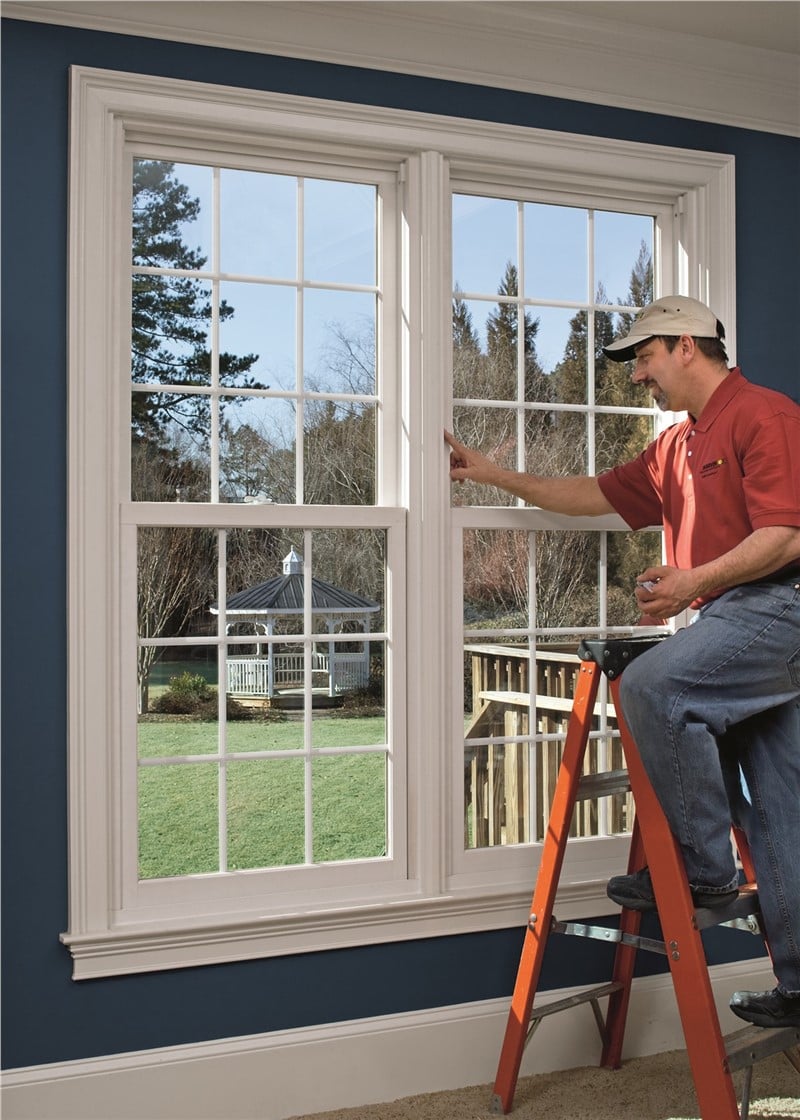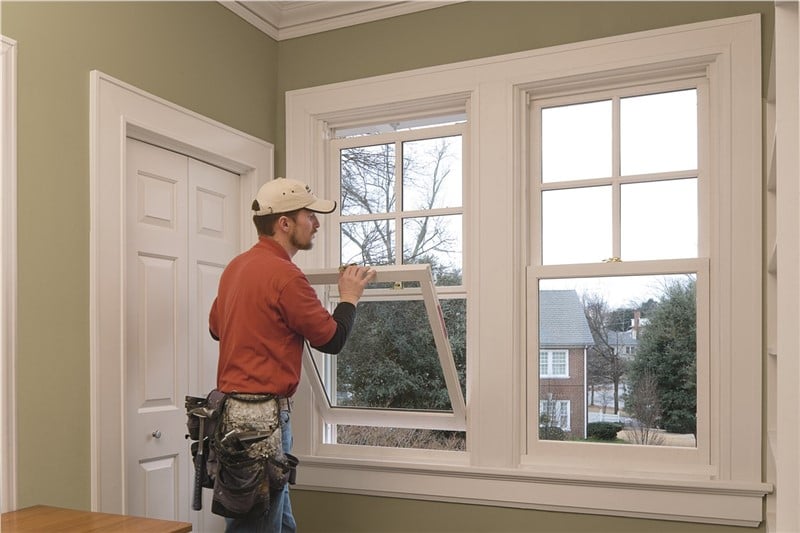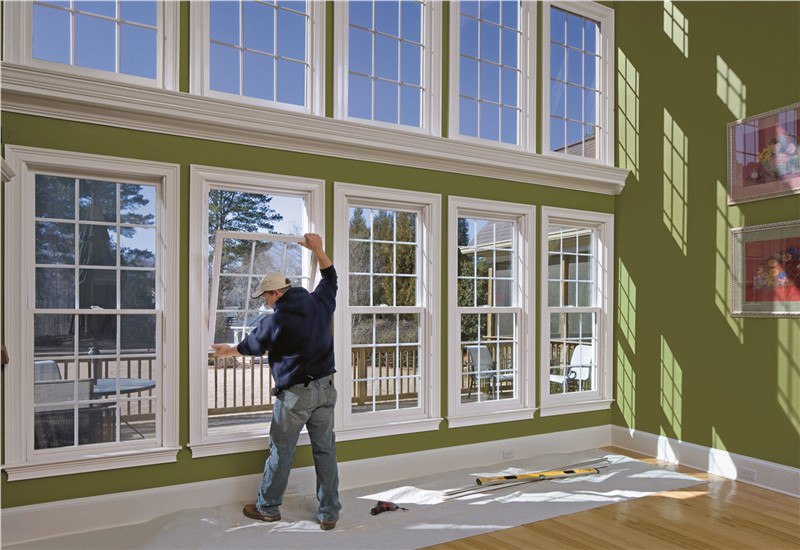How to Interpret Window Ratings

The performance of your home is heavily dependent on every component functioning as it should. One area of the home that is often misunderstood is the windows. These windows are an important part of the home’s functionality and aesthetics, responsible for energy efficiency, protection against the elements, and ventilation—as well as design and curb appeal.
Because the windows of a home are so critical to its performance and appearance, it’s important to understand how to properly evaluate replacement window options before settling on a product and scheduling a window installation. While qualified window contractors can give advice on what’s best for the home, those interested in using their own judgment when purchasing new windows should learn more about how they’re rated.
Nearly all windows have stickers on the window glass itself that help consumers determine the performance of the replacement windows they’re interested in. In this guide to window ratings from Southwest Exteriors, we’ll explain what that information means and how you can interpret window ratings to find the best performing products for your investment.

Reading the Sticker
For the unprepared, the information contained on these stickers can be hard to interpret. Fortunately, each section is easily broken down into the following sections:
- U-factor and R-Value: These two factors both have to do with how well the window manages heat. The U-factor, also known as U-value measures the degree of heat transfer, which is heat gain or loss through the glass. On the other hand, R-value is a measure of heat resistance. As a rule, you want windows with a low U-factor and a high R-value.
- Solar Heat Gain Coefficient (SHGC): This measure tells us how much solar radiation is admitted through the window. This includes direct transmission and the amount of radiation absorbed and then released inward. The score ranges from 0 to 1. The closer to zero the score is, the better the window is at minimizing solar heat transfer.
- Visible Transmittance: Windows are designed to let in light. As such, a window’s ability to let in visible light is scored with visible transmittance. A higher score indicates that more visible light passes through then window during the day.
- Air Leakage: Even the best windows can be subject to air leakage. With air leakage, heat loss or gain can occur through cracks in the window assembly. The scale ranges from 0.1-0.3 with 0.1 being the desired score.
- Sound Transmission: High-quality windows should block out most of the neighborhood noise. With high-performance windows, sound transmission is reduced. Look for an STC value of 26-32 for normal windows and a value of 48-54 for soundproof windows.
- Condensation Resistance: Proper window performance means that condensation is resisted to an extent. This is measured with the condensation resistance factor. The score ranges from 30-80 with 80 being the best score possible.
- Design Pressure: This metric measures how much of a load the window can withstand. This load comes from wind or static snow. The better the design pressure rating, the more pounds per square foot of pressure the window can withstand. The DP score can range from 15-50. If you live in a high wind area, we recommend looking for a window that scores at least a 30 in this category.
What is a good visible transmittance rating for new home windows in San Antonio, Texas?
Texas will depend on your specific needs and preferences. Visible transmittance is a measure of how much natural light passes through the window, with higher ratings indicating more light transmission.
In San Antonio, where the climate is warm and sunny, many homeowners may prefer windows with a high VT rating to maximize natural light and reduce the need for artificial lighting. A good VT rating for windows in San Antonio is generally considered to be around 0.50 or higher, which means that at least 50% of visible light is transmitted through the window.
However, it's important to note that higher VT ratings may also result in more heat gain, which can be a concern in hot climates like San Antonio. To balance the desire for natural light with the need to keep your home cool and comfortable, many homeowners may opt for windows with low-emissivity (low-E) coatings or other energy-efficient features that can help reduce solar heat gain.
Ultimately, the best visible transmittance rating for your new home windows will depend on a variety of factors, including your preferences for natural light, your energy efficiency goals, and your budget. When selecting new windows, be sure to consult with a reputable installer or contractor who can help you choose the right product.
What do the NFRCratings need to be on new windows installed in San Antonio, texas according to Energy Star 6.0?
According to Energy Star 6.0 requirements, windows installed in San Antonio, Texas must meet the following National Fenestration Rating Council (NFRC) ratings:
-
U-Factor: The U-factor measures how well a window insulates against heat loss, with lower ratings indicating better insulation. For windows installed in San Antonio, the maximum U-factor allowed is 0.30.
-
Solar Heat Gain Coefficient (SHGC): The SHGC measures how much solar radiation is transmitted through a window, with lower ratings indicating less heat gain. For windows installed in San Antonio, the maximum SHGC allowed is 0.25.
-
Visible Transmittance (VT): The VT measures how much visible light passes through a window, with higher ratings indicating more light transmission. There is no specific requirement for VT ratings in Energy Star 6.0, but windows with a VT of 0.40 or higher are generally considered to provide good levels of natural light.
In addition to these NFRC ratings, windows installed in San Antonio must also meet other Energy Star 6.0 requirements, such as air leakage rates and durability standards. Be sure to consult with a qualified installer or contractor to ensure that your new windows meet all necessary Energy Star requirements.

Interpreting Organizations and Programs
The ratings for windows aren’t arbitrary calculations. Like anything that has a rating system, there’s a governing body that oversees that category. Some of the most common ones include:
- The R5 Volume Purchase Program: This was a purchase program designed to push for better energy-efficiency at a cheaper rate. Windows in this category boast an R-value of 5 or U-factor around 0.2. Usually, these windows are triple-pane windows. While the energy efficiency cannot be ignored, the truth is the average cost has not seen any significant reduction.
- National Fenestration Rating Council: This the council is responsible for the development of a window energy rating system for the window as a whole. The council is an independent body and focuses on doors, skylights, and windows. The categories under this council include U-factor, solar heat gain coefficient, visible transmittance, and air leakage.
- Energy Star: This governing body strictly focuses on the energy efficiency present with each window. If the window boasts an Energy Star designation, it has met certain energy performance metrics to be deemed as highly energy-efficient.
- AAMA Certification: This is a certification applied to windows that pass stringent testing for each component of the finished window. Everything from the latch to the glass itself is tested. Windows that boast this certification are considered to meet the best-quality assurance standards.

San Antonio’s Top Choice for High-Quality Home Remodeling Services
At Southwest Exteriors, we focus on delivering the absolute best products at the most affordable rates on the market. Combined with our commitment to personalized customer service and expert installation procedures, our customers enjoy a truly stress-free experience when replacing their home’s windows.
Whether you’re ready for new replacement windows, a brand-new roof, a beautiful new entry door or replacement siding—our team at Southwest Exteriors is here for you. Give us a call to speak with one of our agents about your exterior remodeling ideas, including installation services and more. Or, fill out our online form to schedule a free, in-home pricing estimate and design consultation.